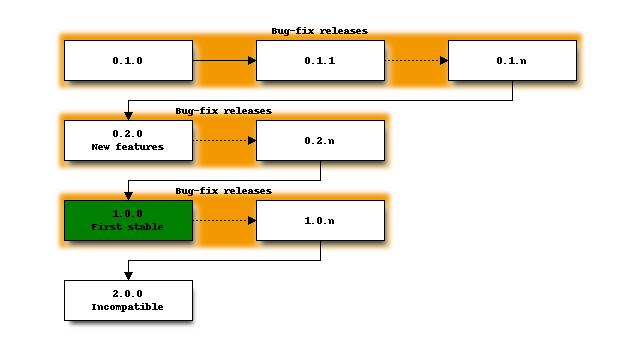Background¶
I maintain many projects, both my toy stuff on GitHub and more serious things at the office. While skipping around in my editor to increase a version number I came to the blindingly obvious realisation that I shouldn’t be doing this manually.
Bumping or querying version numbers should be a zero thought process.
I shouldn’t need to remember the regex needed to
make my editor jump to the version identifier in any given file. I shouldn’t
need to resort to various C-a and C-x contortions in vim or
formulating complicated lisp functions with number-to-string and
string-to-number in emacs.
Now versionah is born, and I should be able to realise those dreams!
Version numbers¶
This — for some — is a very complicated topic, but not for me. Version numbers are made of three components; major, minor and micro. All three components are natural numbers; no exceptions.
If you find version numbers like 0.6c11 acceptable then versionah is not for you.
Note
If you like version numbers with two or four integer components then versionah can be for you too. Support was added in 0.6.0, but that doesn’t mean you have to use it!
PEP 386¶
The version numbering scheme supported by versionah is a very small subset of
LooseVersion defined in PEP 386. It isn’t compliant with
StrictVersion because of the 4 component support, but support for packages
in the wild is much more important to me.
Versioning policy¶
Beyond the simple rule above you’re free to do as you wish, but consider this a plea for a sane versioning policy.

Major component¶
Increment the major component for all backwards incompatible changes.
Minor component¶
Increment the minor component for all backward compatible additions.
Micro component¶
Increment the micro component for all bug-fix releases.